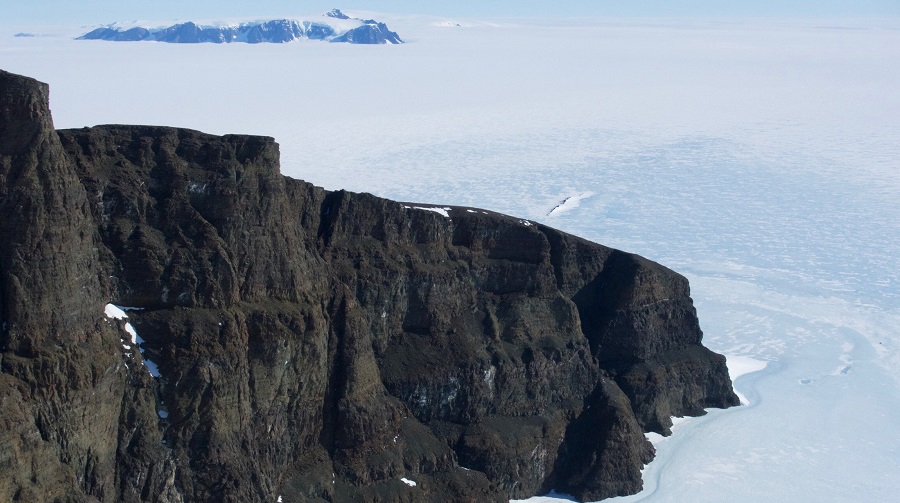Staff Writer | December 1, 2022 |

The flood basalts in Dronning Maud Land, Antarctica, originate from exceptionally deep mantle source. (Image by Arto Luttinen, courtesy of the University of Helsinki).
Huge magma eruptions can initiate deeper below the earth’s surface than previously believed.

In a paper published in the Journal of Petrology, University of Helsinki and Aarhus University researchers explain that large magma eruptions have produced great floods of basalt lava on the continents during our planet’s history.
Conventionally, the largest flood basalt eruptions are thought to be possible only in regions where the continental tectonic plates are unusually thin, so that deep mantle material is able to rise close to the earth’s surface. In such low-pressure environments, the melting of hot mantle can generate very large amounts of magma.
But this notion is now being challenged.
“The idea that flood basalt eruptions generally require melting of mantle under low-pressure conditions is largely based on the trace element compositions of the erupted magmas,” Jussi Heinonen, lead author of the paper, said in a media statement.
According to Heinonen, the relative amounts of rare earth elements in many flood basalts point to magma formation in the presence of low-pressure mantle minerals.
But he and his colleagues became curious about the occurrence of most flood basalts in regions where the African and Antarctic tectonic plates are thick rather than thin.
“We found that many flood basalts that have rare earth element compositions — suggesting high-pressure formation conditions — are actually located in thick regions of the tectonic plates,” Arto Luttinen, co-author of the study, said.
The idea of an alternative hypothesis started forming after the team’s discovery of a type of flood basalt in Mozambique that shows compositional evidence for exceptionally high eruption temperatures.
These flood basalts made them consider the possibility that melting of exceptionally hot mantle could lead to the formation of high-pressure magmas with trace element features similar to those of low-pressure magmas.
Realistic simulation of mineral behaviour
The researchers decided to test their hypothesis using the geochemical modelling tool REEBOX PRO, which enables realistic simulation of the behaviour of minerals, melts and their trace element contents during mantle melting.
The simulations supported their hypothesis by predicting the total consumption of garnet, a diagnostic mineral of high-pressure conditions, when mantle melting occurred at the high temperatures indicated by the flood basalts.
Magmas formed at high pressure can thus chemically resemble low-pressure magmas when the mantle source is very hot. Furthermore, the results indicated the survival of garnet at relatively low pressures when a different kind of mantle source was selected for the modelling.
“Our results help us to understand the apparent controversy between the occurrences of southern African and Antarctic flood basalts and their trace element characteristics,” the authors pointed out.
“Most importantly, we show that voluminous flood basalts can form in regions of thick tectonic plates and that the trace element compositions of flood basalts are unreliable messengers of magma generation depths unless the influences of mantle temperature and composition are accounted for.”
No comments:
Post a Comment